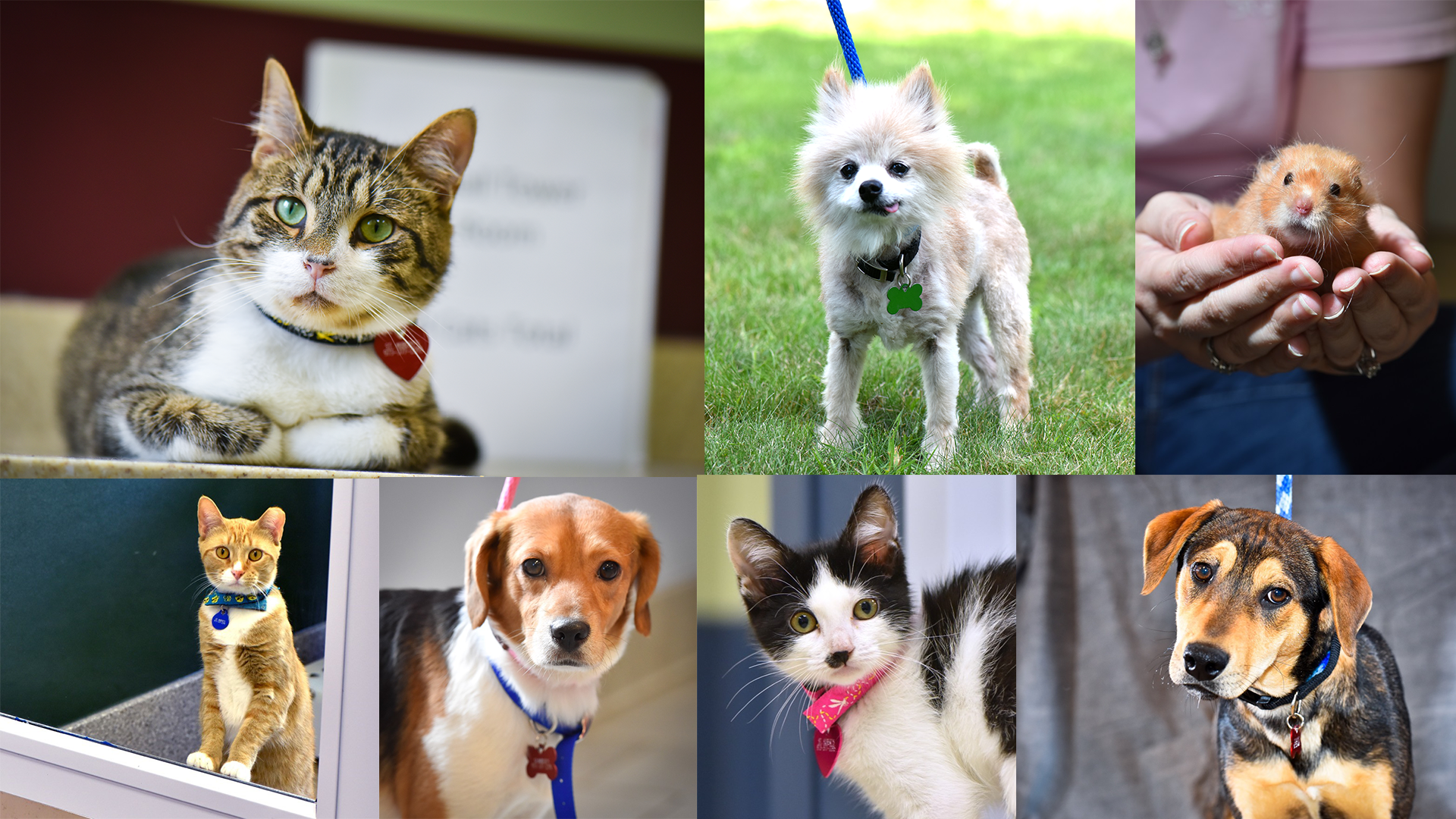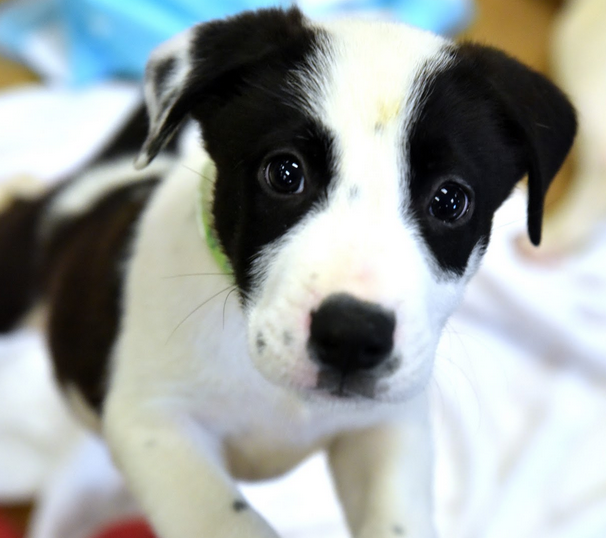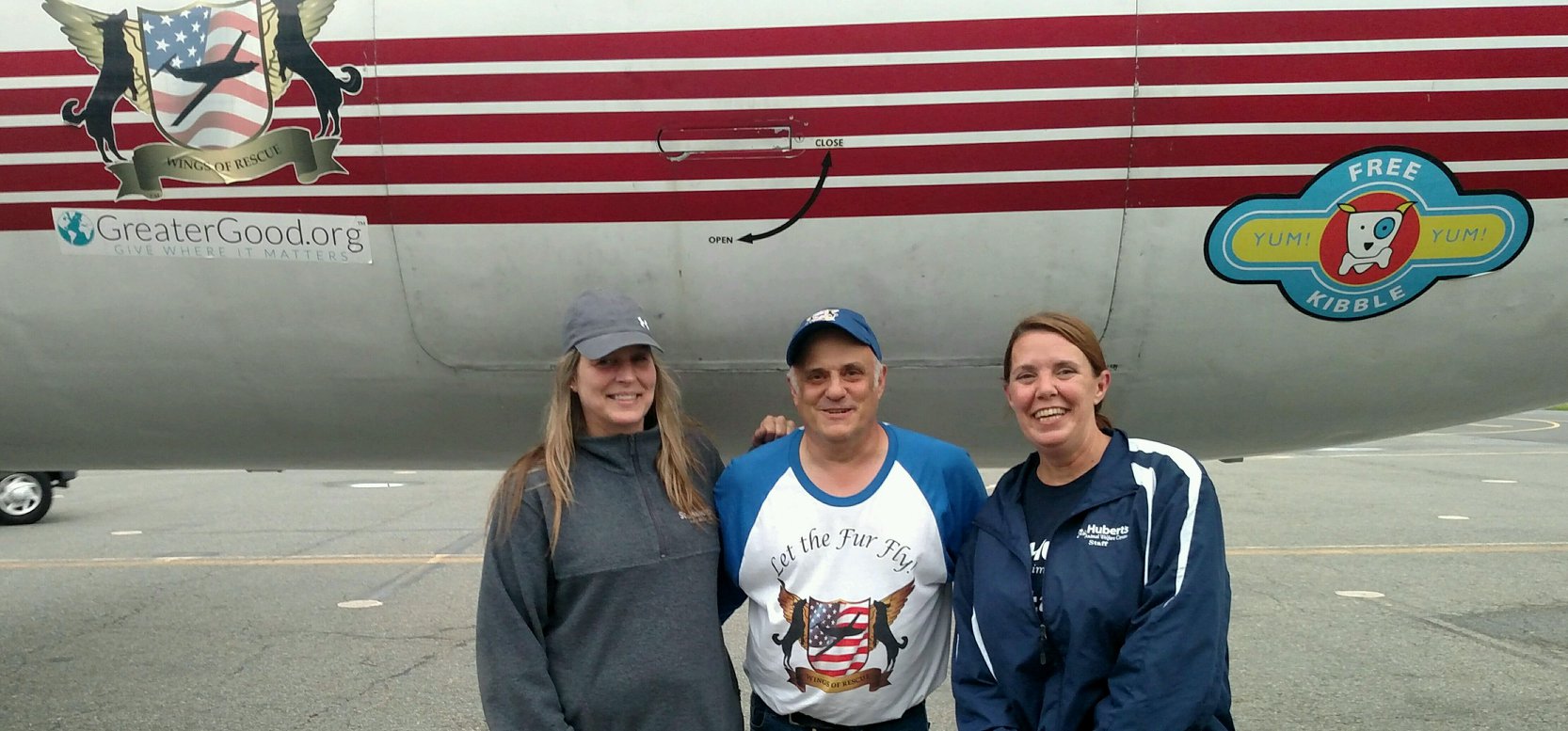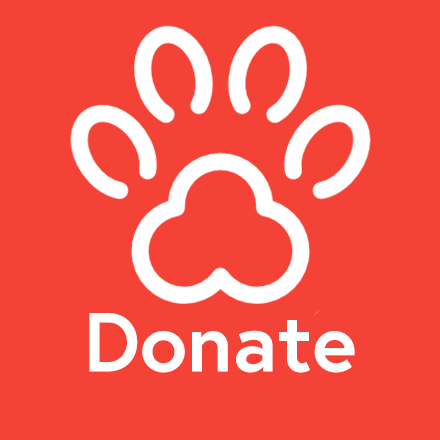
LATEST NEWS
Sister Shelter WayStation Program Takes to the Air!
Thanks to the generous support of GreaterGood.org and Freekibble.com, St. Hubert’s will welcome monthly airlifts dubbed “Freekibble Flight to Freedom” via Wings of Rescue will arrive at Morristown Airport for a year. The inaugural flight, met by an enthusiastic crew of staff and volunteers, arrived on two arrived via two planes on Sunday evening, May 27. On board were 86 at-risk dogs and puppies relocating to northeastern WayStation destination partner organizations with capacity and plenty of adoptive homes available.





Learn More About The Sister Shelter WayStation Program
St. Hubert’s Sister Shelter WayStation Program, operating since August 2016, is a catalyst for ending the euthanasia of healthy, treatable dogs in the United States where there is considerable pet population disparity. With St. Hubert’s as the hub, a lifesaving network of 70+ organizations are partnered and operate under a single set of protocols to connect areas of need with areas of opportunity. The program has already relocated more than 7,200 dogs/puppies since its inception and provides “give back” funding from destination to source organizations for every dog relocated. Those funds, one aspect of the program’s “hands up” resource sharing component, are earmarked for providing affordable spay/neuter in their communities to address the root problem.
The addition of the monthly airlifts will expand the reach of the WayStation safety net, enabling us to assist additional organizations in need who lie beyond the “best practices” range for responsible ground transport without layover.
Transporting to the Future
Connecting places of opportunity with areas of need
By: Heather Cammisa, CAWA
President & CEO
“Is it true y’all don’t have puppies in the North?”
Ten years ago, in a small, tidy shelter in one of the poorest areas of Mississippi, that was one of the first questions I heard. I was in Mississippi working on a project to assess the severity of the overpopulation issue, helping develop effective spay/neuter messaging and provide hands-up help in training, networking and some funds working on a project launched in the wake of Hurricane Katrina.
The shelter manager and the board president were both curious about the puppy question. I told them my take as a former shelter director from up North—that we do still have puppies, but that we’ve made great strides and have the capacity to help with dogs. I described what we felt had driven the progress in the Northeast—accessible spay/neuter efforts, effective animal control laws, a built-up humane infrastructure and more—and I found myself looking at two women with tears in their eyes. They couldn’t imagine a world without run after run of beautiful puppies, more than could ever be saved.
The Mississippi shelter had gotten offers of help from a group up North, but “we thought it was laboratories trying to get our animals,” the board president confessed.
Quantitative studies told the story: the deep South had more households with dogs, more dogs per household and far lower spay/neuter rates than the country overall and the Northeast in particular. Their laws weren’t as progressive, they didn’t have a statewide animal control association, there was a dearth of infrastructure in the region (one shelter might be the only shelter for hours in any direction), and regional climate and poverty were working against them. But hope filled their eyes when they heard that success was possible and space-based euthanasia was vanishing in regions where it was once the norm. I was privileged to share that message with more than four dozen shelters I visited in the deep South.
Fast forward 6 years. I’d become President /CEO at St. Hubert’s Animal Welfare Center in New Jersey and we were a couple years into our “Sister Shelter” transport program that provides a hands-up to source shelters—specifically, for each dog we took in from our partner groups, we donated $50 back from the adoption fee to fund low-cost spay/neuter for their public. We provided educational opportunities, enrichment kits, onsite visits to share our behavior modification techniques and more.
Attending an HSUS Companion Animal Advisory Council meeting in early 2015. I was the only Mid-Atlantic representative and was invited to sit with another regional group. I sat down with the New England reps and asked them about a crazy rumor I’d heard—that they’d reached the point where they were transporting in cats. It was my version of “Y’all don’t have kittens in the North?” It was true. They explained that they had seen the tipping point coming, but even they were surprised how quickly it did.
Thus began St. Hubert’s Feline Pipeline program. We increased the number of cats we picked up from all over New Jersey, prepped them and got them up to our New England friends. We’d become both a receiving state for dogs and a sending state for cats, giving us great insight and opportunity to see what was going on up and down the East Coast.
We should be celebrating this momentum of change and how far we’ve come. In the 1970s, the United States euthanized an estimated 100 dogs and cats per thousand humans—one dog or cat for every ten people. Today, based on most recent estimates from the ASPCA that figure is 5 dogs and cats per human thousand. From 100 to five. Even if you double the ASPCA’s estimate—and no group thinks it’s still that high—it’d still be one tenth of the euthanasia we were once performing.
We don’t talk about this enough, but it’s a new day. It’s time we focus on connecting the places of opportunity with the areas of need. It’s time to really put our collective shoulder behind ending the euthanasia of our healthy and treatable companion animals, mobilizing our movement via productive relationships and engaging in dialogue about what we can do TOGETHER to secure the win, putting in backstops (such as laws against puppy mills.)
The simple fact is the national groups can’t be everywhere. It’s up to us to help each other. One of the biggest obstacles to our own success is how unconnected we are with one another.
Starting with self-assessment, here’s what we’re doing at St. Hubert’s. In 2016, five years into our Sister Shelter program, we created an official Sister Shelter WayStation thanks to PetSmart Charities. As a former economist, it pained me to see shelters driving up and down the east coast for small numbers of dogs, knowing that with coordination on both ends, a single transport could move as many dogs much more efficiently. Airlines and big corporations all use similar hub models. So, we created one. We believe we’ve built something replicable that, if adopted in targeted areas, could cast a net over the nation as a whole.
In our first 11 months, our network grew to 31 source shelters, 27 destination shelters (us included) and transported more than 3,700 canines, provided $90,000 back to source communities for low-cost or free public spay/neuter, provided scholarships to five source shelters to Animal Care Expo 2017 and provided onsite training and enrichment supplies in four states. We’ve sponsored volunteer software for one agency, donated banks of caging in Kentucky to enable indoor housing for puppies and sent food, litter and supplies to many organizations. The program helps older dogs, animals with special needs and larger dogs as standard operating procedure, not just puppies.
Nothing illustrates the bigger picture impact than the organizations on both sides. Dr. Kim Sanders of Anderson PAWS in Anderson, South Carolina, used give-back funds to create a “Spay or Pay” program for stray reclaims—they waive all fees of reclaim if the owners allow their pets to be altered, at no charge. They also provide free spay as a surrender prevention tool. At Humphreys County Humane Society in Waverly, Tennesse, their special program alters pit bull types, using a lottery system. Humphreys County Humane Society president Ann Hunter wrote, “This program has allowed us to reach people that would not normally come to us for help … Thanks is just not enough for how you have helped us help the animals.” They included photos of some of the dogs and their people who utilized the spay/neuter program.
Some of the source shelters now act as secondary hubs, reaching out within their areas. That is absolutely a goal of the program.
Annie Guion, executive director at Windham County Humane Society in Vermont, describes how the network helps keep our community connected with one another and reminded of the growing divide in experiences, writing, “[The source shelters] are dealing with a situation that would crush a lot of us … Thank you for sharing the humanity of these amazing people … It is such a good reality check for us spoiled northerners.”
We treasure our source shelters. They help us as much as we help them. They trust us with their “babies” and with their staff, volunteers and community. They enable us to make an even bigger impact in mission, now and into the future.
Together we can expand our dialogues to include discussion about enacting needed laws, speaking up for wildlife, farm animals and against things like the circus coming to town. We can brainstorm about things like building public support for those 20-24 million much-loved pets that live in poverty and whether spay/neuter should be more targeted in order to put resources to optimal use. We can navigate issues of sustainability like the potential for effective mergers in our field, whether big new buildings are needed and how expanded community outreach efforts can be funded. There’s much we still need to work on together and the more mobilized we are, the better we’ll do it. We need to look to our roots of animal protection and prevention of cruelty, beyond companion animal adoption and response.
Transport alone is not how we’ll cross the finish line. It is a powerful catalyst for getting there faster if hands-up is considered obligate. Is there a better opportunity to deepen the ties with one another to respond to evolving opportunities and challenges in our cause than these types of networks? I can’t think of one.
Responses from
Animal Welfare Professionals...
“Nailed it, Heather Cammisa. Transport is only a bandaid if source shelters don’t address the root cause of the obstacles that lead to the need - like lack of affordable s/n and pet retention programs. Destination shelters are at our best when we lend our expertise and funds to support the source organizations in their efforts to eliminate the need for transport by implementing programs mentioned in this blog. Heather, MHHS hears you and we’ll immediately step-up our efforts to provide a hand-up to all the transport partners we work with.”
“Programs like this saved PAAS. We were designed as an adoption shelter in a rural, economically deprived area. Without transport, spay/neuter grants and HSUS Pets for Life we would be closed. Instead we’ve transferred 2,000 dogs to Dumb Friends League, received spay/neuter grants and changing the culture for pet ownership with pets for life. I’m a believer.”
“Brilliantly stated! from time to time our local NJ shelter has worked with St. Hubert’s taken in some of the Way Station animals and they are highly adoptable, wonderful animals that could have lost their lives were it not for this innovative program. Kudos to Heather and her team for making this successful program work so well for both sending and receiving shelters and most importantly, for the animals saved!”
“Having lived in the north for most of my life, I know the benefits of spay/neuter. Relocation to a state without strong animal care laws has been a real challenge. I help run a rural volunteer animal shelter. We could not have made it without the WayStation program and similar transport programs. Education is sorely needed in this area to stem the tide of animal births. Many people just don’t see the need for spaying or neutering their pets. The funds sent back to source shelters by St. Hubert’s are helping to stem the tide. I cannot say enough good things about St. Hubert’s for their WayStation program and PetSmart Charities for their grants to continue providing care to the many unwanted animals in this area.”
“Equal collaboration, transparency, practical altruism and connection with a macro-level understanding of welfare and protection appear to guide the beginning development of what, as the representative of a source region and shelter, I hope will become the norm in transport practice. Thank you for this contribution.”
“So true. In the North we have indeed largely solved, at least in the short term, canine over population and now see the result of similar spay/neuter efforts rippling in the feline community. I’ve long said “why shouldn’t those creatures travel North to communities that want to adopt them. It’s simply an accident of birth that a puppy arrived in the Deep South still coping with high euthanasia. But, were we really helping? Points to ponder at 2 a.m! Now as a newly active partner of the Waystation Programme knowing funds are being channeled back to those shelters and communities that surely need the help is the smart solution. Many hands-up will ultimately bring our partners south of the Mason-Dixon line to a place where they are not forced to operate as we used to in the 1970’s and 1980’s.”
“As the rescue coordinator for a source shelter, I can not express how big an impact the WayStation transport program has had on our small, rural shelter.
The funding, from our transport animals, is helping us realize our goal of 600 low cost spay/neuters. Our transports are always full. Our community is enthusiastic to take advantage of a cost effective way to alter their pets, if it is available to them.
The consistent transporting of the overflow of dogs out of our shelter has dramatically increased our live release percentage. We hope to continue to be able to participate in this program, and to help educate our community, to make the lives of our companion animals better.”
“As the director of a rural shelter, I can’t be more grateful for the 750 lives saved this year already through our partnerships with transports, including St. Hubert’s. In reality, that number is actually doubled, since every life saved on transport allows another one to be saved at the shelter. We have seen intake numbers decrease through our S.N.A.P. (Spay Neuter Assistance Program), but there is still a long road ahead of us. Working together is the only way to go!”
“Well said! I love being part of a shelter that also partakes in being part of the solution. Only in working together can we continue to do great things!”
“Loved this article and have shared around. Light at the end of the tunnel, not there yet but things are improving. I am volunteer cat trapper in New Orleans and our little group traps 25 cats a week and the Louisiana SPCA spays and neuters them. We ask people to pay something if they can. Many don’t pay a dime but shelter intake and EU is dropping. Lots of ear tipped cats out there but plenty more to go. Transport, spay neuter and education along with massive free or low cost spay neuter the answer to this nightmare. Very nice article...”




